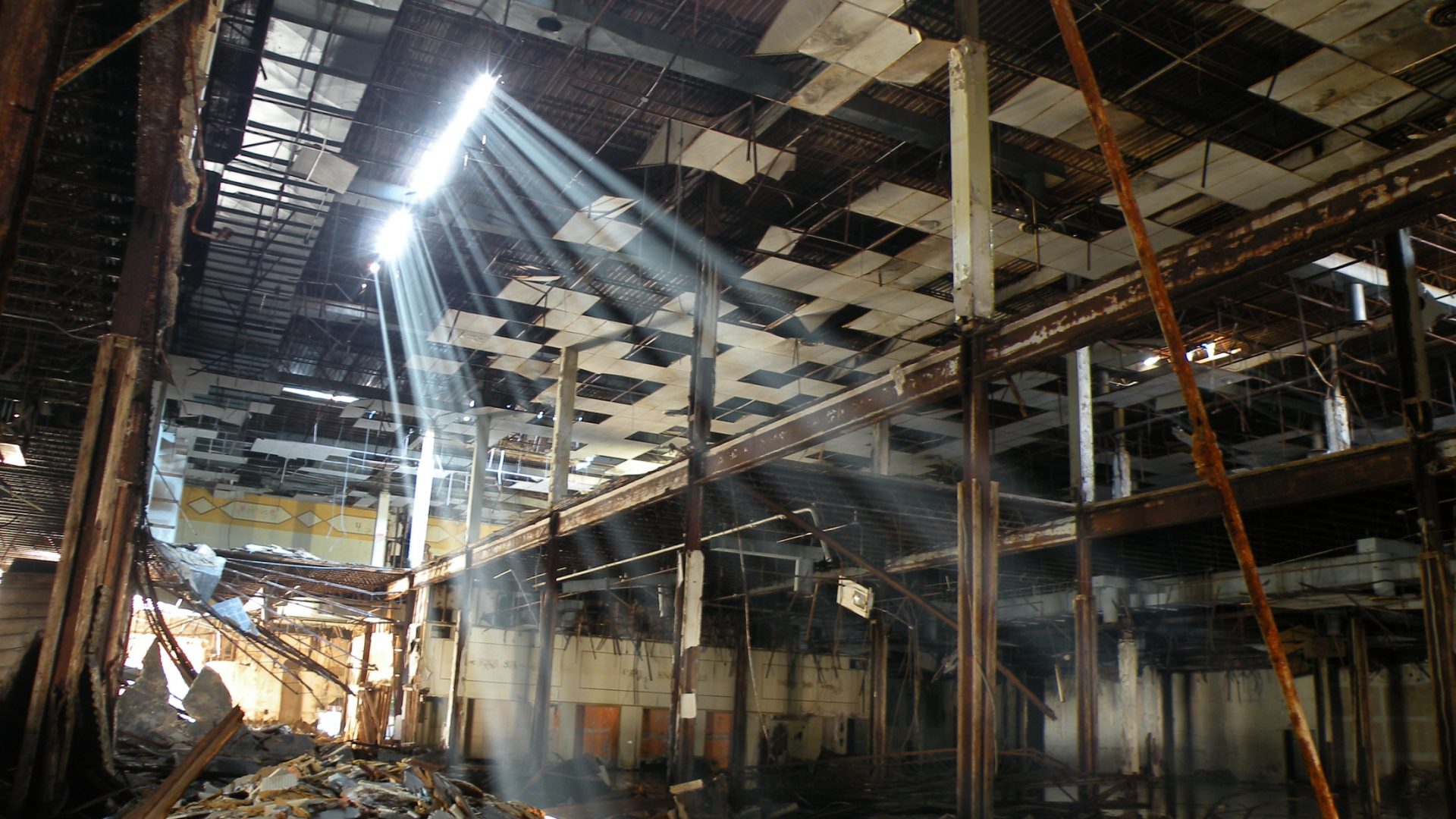| Hood(s) | Near North Side; |
|---|---|
| Location | Clybourn Avenue on the north, Chicago Avenue on the south, Orleans Street on the east, Halsted Street on the west |
| Lifecycle | 1942 – 1945, Construction of row houses; 1955 – 1957, Extension; 1957 – 1962, Construction; 1995 – 2011, Renovation of low-rises; 1995 – 2011, Demolition; |
| Controlling gangs | Mickey Cobras; Gangster Disciples; Vice Lords; Imperial Chaplins; 14th Street Clovers; Black Disciples; |
Cabrini Green is indeed the most notorious project complex in Chicago history because of its bad reputation and its location in the city. These projects sat among a high class neighborhood since they were built not too far away from downtown Chicago and a stone throw away from Gold Coast and Streeterville. These projects were heavily discussed and joked about by people that never lived these horrors and have never even visited. Hearing the very name Cabrini Green would send shivers up suburbanites’ spines as they heard that these buildings were terrifying yet they knew no details because they had never been here and did not know anyone that had ever been here, unless of course they were drug using brats from spoiled backgrounds that wanted to come here just for the drugs.
These projects were built on cursed grounds from the start, as the Cabrini Green section was formerly known as “Little Hell” since the late 1860s. The name was fitting because this was Chicago’s first slum, first gangster neighborhood and first all-around hell hole in the city. All the gang banging, drug dealing, vice, illegal gambling and excessive murder all started here on these grounds and the neighboring Goose Island area.
The Chicago Irish Mafia and the Chicago Italian Mafia were born out of these streets in Little Hell. The neighborhood became worse as time went on and wars between Irish gangs, Italian gangs and the Black Hand extortionist Italians. The worst area was “Death Corner” at Oak Street and Milton Street (now Cleveland Street) where about 30 murders occurred annually as gang members would walk right up to someone and shoot them in broad day light while onlookers kept their mouths shut when police asked questions. The wars further ripped this neighborhood apart in the 1910s, 1920s and 1930s until the city decided they needed to do something about all this poverty and crime with people living in literal hell holes.
In 1942 the answer to this housing and crime crisis was to tear down the poorly constructed shanty towns and run down apartments and replace the ghetto with new buildings that provided comfortable living for the cities’ poor. In 1942 construction began on the Frances Cabrini Green row houses which had 586 units for residents to live in; the construction was complete in 1945. The projects were named after Frances Xavier Cabrini who was a nun that took care of impoverished Italian immigrants in the Missionary Sisters of the Sacred Heart.
Many dilapidated slum houses occupied by Italian families were bulldozed down to make way for these row houses and the vast majority of the community that was being replaced would not even qualify to live in these new projects due to criminal backgrounds, unstable income or terrible credit. The applicants were screened very carefully before being selected to live in these buildings because CHA wanted residents that were poor but not too poor and also not people that were unstable, this would assure that the buildings would generate the revenue to make renovations and also assure that the buildings remained safe from dangerous types. These projects initially housed mostly white residents but about 25% of these projects housed African Americans as well.
After World War II ended, Chicago’s war industry came to a grinding halt. The war industry employed thousands of African Americans that otherwise would have a difficult time securing employment due to skin color. When the projects opened in 1942 the African American population in the projects heavily relied on employment in the war industry but once that industry collapsed the African American workers were all laid off first as these companies kept their white workers first even if they did not work as hard as a black co-worker. African Americans in the projects then struggled to find new jobs because many industries had priority hiring practices for whites, this lead many African American adult males to resort to selling drugs in the community and in the nearby downtown area just to put food on the table. The drug sales led to addicts flocking to the neighborhood committing crimes and even becoming dangerous.
Black street gangs from the Near West Side settled in these row houses like the Imperial Chaplains and 14th Street Clovers and Italian street gangs battled them viciously in the late 1940s after they moved in.
The Italian community was alarmed by the increase in crime and soon Italian street gangs formed in the neighborhood, the first were the “Italian Sharks” from Chicago Avenue and Cambridge Avenue that fought blacks in the projects that they viewed as hooligans.
Even though crime increased in the area in the 1950s the projects were still an ideal place to live and many were lined up wanting to live in these row houses but not everyone could get in, to solve this problem the CHA began construction of high rise projects in 1955 as more of Little Hell or Little Sicily was removed. Construction continued between 1955 and 1957 as impoverished African Americans moved into the new high rise towers that composed of 15 new towers with 1,925 units. The new high rises saw more Imperial Chaplains and Clovers move in.
The Italians of Little Hell and the Frances Cabrini low rises felt they were losing the neighborhood to the blacks in the new high rise towers; therefore, more Italian greaser gangs formed in the neighborhood that specifically fought black youths in the projects.
Regardless of the crime and gang fights in the area the Cabrini Green projects were still ideal to live in and were well maintained; however, starting in the late 1950s after the high rises were complete much of the Italian families began moving out of the row houses because they felt the community no longer catered to the Italian community as Italian businesses, churches, restaurants etc…began closing down.
Once the first wave of the high rises was completed in 1957 the city began construction of the William Green Homes that began bulldozing what was left of the Little Sicily community.
In 1959 Egyptian Cobras moved into these projects and absorbed up many of the Imperial Chaplains and Clovers. The Cobras became the first prominent gang to move into these buildings after they fled the west side of the city after losing battled with the Vice Lords.
In the year 1961, a Devil’s Disciple founder Richard “Champ” Strong moved into these projects and founded the Black Deuces also known as Deuces Wild. He spread the Deuces like wild fire and they fought viciously with Egyptian Cobras. The Disciples became the second prominent gang to move into these projects.
These high rises consisted of 1,096 more units within 8 brand new buildings which were completed by 1962. By the time the projects were completed most of the Italian community had moved out of the original row houses. In 1965 the last Italian church Saint Philip Benizi Catholic Church was bulldozed down and that was the last of the Italian identity of the neighborhood extinguishing what was left of Little Sicily. Once the church went down the rest of the Italian community left the neighborhood and the rest of the Italians in the original Frances Cabrini row houses also packed their bags especially now that the CHA no longer carefully screened the would be tenants for criminal and employment backgrounds, now it was a first come first served basis. Because of the lack of screening of tenants more criminals and unemployed moved into these projects.
By the later 1960s Vice Lords also made their way into these buildings and became the third prominent organization to call these projects their home.
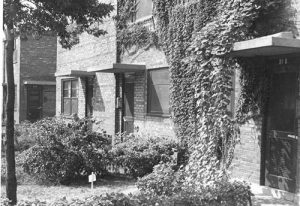







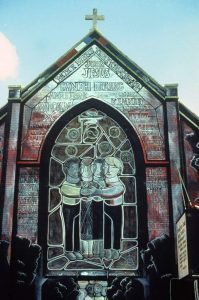

The next few years would turn the projects upside down with some key events. First, in April of 1968 after the Martin Luther King assassination, snipers set up position on the roof tops of the projects at 1200 North Larabee where snipers were shooting at firemen, later police discovered the body of Curtis Jefro that had been shot in the head (Chicago Tribune Page 4, April 6, 1968) police were terrified to attempt to put down this violent onslaught because if anyone got close they got shot. Even after the riots of 1968 were deterred the Chicago police were still cautious about policing these projects.
The second sniper attack was on Friday July 17, 1970, two police officers were gunned down by snipers from two different high rise buildings that surrounded Seward Park at 1117-1119 Cleveland Avenue building and 1150-1160 Sedgwick as the snipers fired several rounds into the park that not only stuck the police officers, the blasts also struck a little boy named Jonas Edwards. The police then had a standoff with the snipers until they stormed the towers locking the towers down and kicked down the doors down to several apartments and made arrests (Chicago Tribune Page 1, July 18, 1970). After this shooting the police began neglecting patrols of these projects as law enforcement became terrified of these buildings which allowed the gangs to take over this complex completely and the sniper fire sporadically happened throughout the 1970s as the gangs used this tactic to shoot at rivals. The shooting of the officers came about after they responded to violent dispute between Egyptian Cobras and Black Deuces. During this same time Richard Strong had formed the B.L.A.C.K.S (Black Lateral Action Committee Knights of Strength) which was a group aimed at creating a positive impact on the black community in these buildings, however, they would often resort to violent activity.
Starting in the year 1970, Disciples and Egyptian Cobras began a vicious war between each other that started right around when the shooting happened of the two police officers. Both gangs were tearing into each other and aggressively recruiting among the smaller gangs in the complex. Over the next two years one smaller gang after another absorbed into either the Egyptian Cobras or the Disciples, while some became Vice Lords.
The final tic that pushed these projects over the edge was the massive loss of downtown Loop and Near Northside manufacturing companies that laid off several thousand African Americans in 1972, now the poverty in the projects would culminate to a higher level bringing about desperation as many of the single unemployed mothers moved in relatives or others that had criminal backgrounds but would help pay the rent.
The Black Deuces eventually assimilated into the Black Disciples because of the roots of their founder Richard Strong who helped create the Devil’s Disciples which was the top tier gang within the Black Disciple nation, as so it was, this is the story of how BDs ended up in Cabrini Green.
The Cabrini Green projects not only became ridden with crime and gang activity by the mid-1970s, there was also a large amount of tenants unable to pay rent now that tenant screening was more lax and allowed several unemployed into the projects. There were also issues of several transient residents that did not actually live in the buildings that were in an out of resident’s apartments and also sleeping in the hallways and stairwells, many of which were either violent gang members or drug addicts. The transient residents spray painted graffiti in the hallways and often destroyed the property, many could be seen urinating in the hallways and using drugs out in the open.
The high rate of unpaid rents, the need to repair millions of dollars’ worth of destruction brought about a inability for CHA to make renovations to the buildings and the buildings were left in total neglect by the late 1970s, but this was the fault of CHA for not carefully screening tenants starting in the mid-1960s and now by the late 1970s the impact was felt and the CHA could not and would not be able to fix the mistake. Now this neighborhood was once again just as bad as or worse than it was before the projects, what was supposed to fix the problem only created a new one.
Cabrini Green did attract attention because of the hard conditions which was first seen in 1974 when the popular television show “Good Times” was set to take place in these projects; however, the projects were only used for the opening and closing credits for the show, as the actual filming was done elsewhere.
In the year 1978, Don Smoke and Little John converted all Disciples into Black Gangster Disciples after a split was made official between Black Disciples and Black Gangster Disciples in 1976. Cabrini Green would follow the “Gangster” concepts and move to become BGD. Once this was established an immediate drug ring started in Cabrini Green that was much larger than anything seen before. The BGDs became the biggest drug dealers in this complex and began pulling in several thousands in profits.
In 1981, Mayor Jane Byrne moved into these projects at 1160 N. Sedgwick on the 16th floor for a total of three weeks to prove to the city that if you have constant police presence in this area the crime and gangs will go away, her point was indeed proven as during her three weeks many of the gang members fled the projects especially the transient population due to heavy police presence and beefed up security, law abiding residents of Cabrini were grateful for this and hoped the change would stick. Right before Byrne arrived there was a violent gang war between Mickey Cobras and Black Gangster Disciples that left 10 dead and 37 wounded which caused many to be further terrified of the projects in early 1981, but once Byrne arrived it all quieted down but only while she was there, after she left the violence reappeared and the gangs and drugs were back in full force but this time they had a new tool for engaging in their wars with each other and the police which was the welded shut back doors of the projects that Byrne ordered shut in order to prevent attacks on her from the back, this procedure was only meant to be a temporary measure just while the mayor stayed but for some reason her security team never restored the door to full function, as a result, gang members could now hide from police and rivals during shootouts closing off anyone from coming at them which gave gang members more time to stash drugs and weapons. The sealed doors also prevented enemies from escaping if they were being chased in the building making it easier for more murders to happen.
The 1980s and 1990s saw the roughest times in Cabrini Green as gang wars raged in the projects over control of the drug trade as heroin and crack cocaine were the hot commodities. Gang members controlled the elevators and would often tax residents for use even if the gang members did not live there, the elevators were also the scene of rapes as young women were raped savagely in the elevators and in the darkened areas of the hallways, but life had to carry on for these women in the projects because law enforcement was not interested in helping them, in fact, law enforcement stayed as far from the projects as possible as they blocked the streets at night near the buildings which gave gang members the courage to walk around with AK-47s, Tech Nines, pistols, .357s and Uzis as they fired them off in the air for the hell of it, which occurred much more often than the show Gangland talked about only happening on New Years Eve in 1999, it actually happened many of nights.
Gang members and drug traffickers harassed residents and sometimes got violent with them. The project grounds outside and the hallways were littered with trash and drug needles as children had to play in these conditions and be peer pressured into joining gangs or selling drugs, some were even pressured into using drugs.
The use of sniper shooting tactics was first done in 1968 during the MLK riots and throughout the 1970s gang members would gun down rivals or shoot at police which was evident in 1970 when two police officers were killed by high powered sniper rifle fire, now in the 1980s and especially by the 1990s the sniper method was used regularly as gang members would pick off rival gang members and drug dealers from the top of these high rises. These gang members were not highly trained military officials nor did they have any sort of professional shooting expertise; therefore, many innocent people were picked off by this gunfire that included small children, even babies as the bullet blasts would rip through their tender bodies. Too many times there were grieving mothers clutching their young as they lay lifeless in their arms after just a simple stroll to the store or to take a walk to public transportation or even to go to school.
The buildings became extremely run down and many units were shuttered and vacant allowing drug addicts and other undesirables to frequent them rent free. These projects were also infested with rats and cockroaches and it was never within the cities’ budget to bring in any exterminator and then again many exterminators did not even want to enter these buildings anyway.
In the 1970s several drug addicts were accidentally falling from the high rises in the breezeway areas and gang members were throwing their rivals off the balcony in these as well, this prompted the installation of chain link fences that gave the projects a cage like appearance in the breezeway.
All this madness and damage from violent gang and drug wars created a mafia type business in these buildings where over $100,000,000.00 a year was made in drug profits at the hands of the most dominating gang in the projects the Gangster Disciples, that set up a highly complex drug operation as they put their members to work selling drugs for a 70-30 split meaning the GD organization got the 70% while the young dealer got the 30%. The operation was brutal and military like as they forced their members to abide by strict rules giving them certain shifts to work and there was no being late or any negotiations.

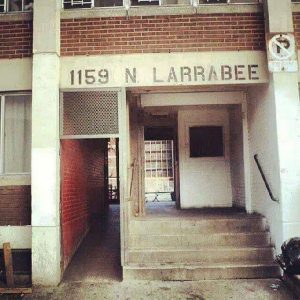

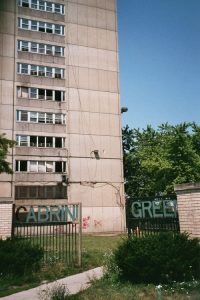
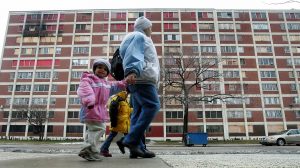
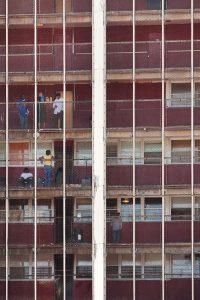


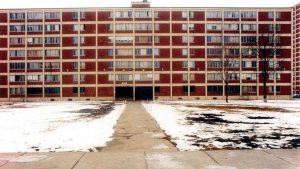

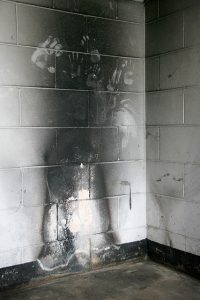
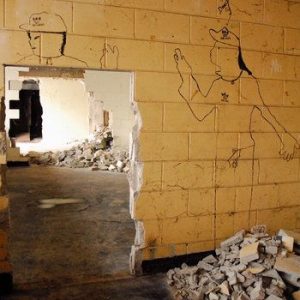

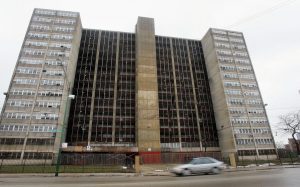
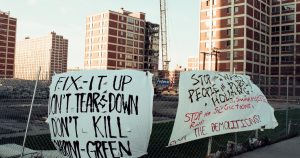

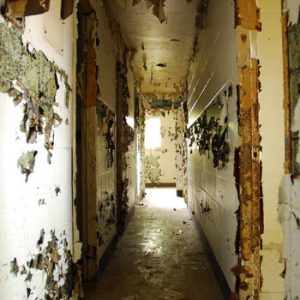


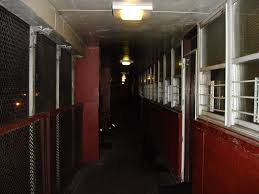


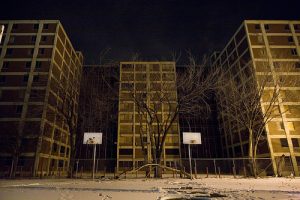
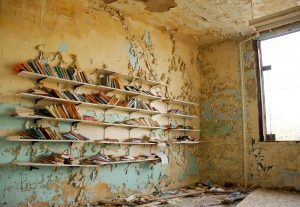
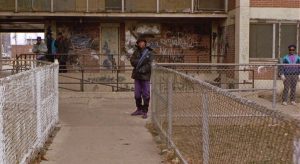
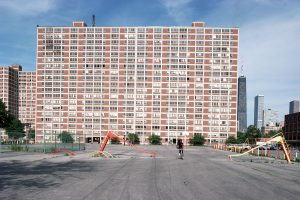
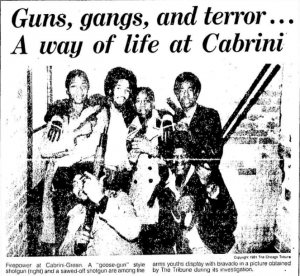


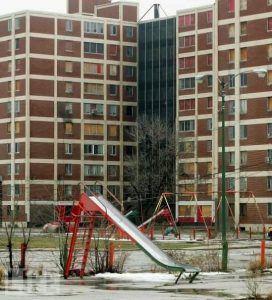

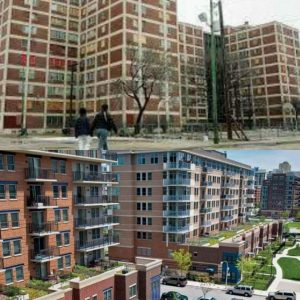
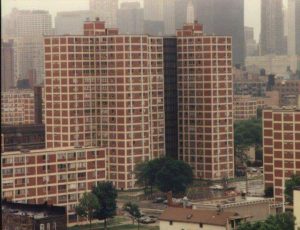


For many young black males in these projects being a drug dealing GD was a job where you worked a shift and checked in and out for the day and you had to carry a gun. Drug dealers worked around the clock 24 hours a day in shifts in these buildings as leadership had a firm hand over these youngsters’ actions. If the operation was under threat, the GDs would fire upon their rivals with a barrage of bullets that even aimed at the police that tried to shut it down until they finally gave up. They controlled the stairwells, the elevators and the entrances. The rivals of the GDs the Vice Lords and the Mickey Cobras only controlled a handful of buildings combined but the GDs had the vast majority of the territory. The GDs were so disciplined in the 1990s that they were ordered to come out to the court yard and do exercises at 5 O’clock in the morning.
In the 1970s and the earlier 1980s the GDs (then known as BGDs) took apart rival gangs in the midst of vicious gang wars all through these projects as they chased down and beat men nearly to death, only the Vice Lords and Mickey Cobras (then known as Cobra Stones) stood a chance against the BGDs, either rivals joined the BGDs or left the area.
In the late 1980s the GDs developed a connection to the Columbian drug cartels as they brought hundreds of kilos of cocaine into the buildings and cooked it into highly profitable crack cocaine which got the drug addicts jumping for more because crack is extremely addictive while powdered cocaine has more mild withdraw symptoms. The GDs set up their own security force where they paid young members $75 just to patrol the project buildings with automatic weapons until their shift was over, but if a member refused he was beaten savagely. This was a highly complex drug monopoly that could not be eliminated by law enforcement the only way to end it was to eradicate the territory.

Murder, drugs, deterioration, disease, trash in the halls, transients, unsafe and unsanitary conditions, it was no wonder that the filming of the horror movie “Candyman” was shot here in 1992 because of the horrific deteriorated buildings made a perfect background for this horror movie, you could even see a Mickey Cobra gang tag in the movie.
The horrors of the Cabrini Green buildings won Chicago the Hope VI grant that allowed Chicago to redevelop the projects into a mixed income community which was especially seen as a blessing after the “Girl X” case in 1997 when 9 year old Shatoya Currie was raped and poisoned and left in the stairwell at 1120 N. Larrabee which left her blind, mute and paralyzed the rest of her life, this story made headline news and even angered the Gangsters Disciples that ran the building as they looked for the perpetrator, eventually Patrick Sykes was convicted of the crime.
Demolition began of 8 high rise towers in 1995 that were originally a part of the extensions built in the late 1950s. On September 27, 1995 1117-19 N. Cleveland Ave become the first high rise public housing project to be torn down in Chicago since the Hope VI grant. 1157-59 N. Cleveland was the next building that was torn down in 1995 (Chicago Tribune Flynn McRoberts, September 27, 1995). The demolition would continue until the last high rise was torn down in 2011.
The original low rises remain intact but abandoned as residents of these low rises await renovations that are supposed to come; only some of the low rises are still occupied. The area where Little Hell and Cabrini Green once stood looks unrecognizable today as the area is filled with high priced condos and townhomes.
